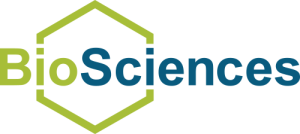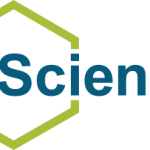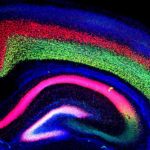Human skin is teeming with microbial life, and not just bacteria. An international collaboration among researchers at Berkeley Lab, led by Hoi-Ying Holman, the Medical University of Graz in Austria and at the University of Regensburg in Germany, found representatives of the domain archea–which inhabit some of the most extreme environments on the planet–coexisting alongside more run-of-the-mill microbes. What’s more, according to the paper published in Scientific Reports, the relative abundance of archea varies with a person’s age. Holman, a senior author on the report, is head of Chemical Ecology in the Earth & Environmental Sciences Area and has a secondary affiliation in Biosciences in the Molecular Biophysics and Integrated Bioimaging (MBIB) division. Using the Advanced Light Source (ALS), her group developed a rapid and label-free method to screen cells and tell if they’re bacteria or archaea. Read more from the Berkeley Lab News Center.
Berkeley Lab Director Announces Biosciences Leadership Transition
 In a town hall meeting on June 28, Laboratory Director Mike Witherell announced that Biosciences Associate Lab Director Jay Keasling has agreed to take on an important new role as Chief Science and Technology Officer (CSTO) for the Biosciences Area, and Mary Maxon, currently the principal deputy for Biosciences, will replace Keasling as ALD for Biosciences, effective July 1, 2017.
In a town hall meeting on June 28, Laboratory Director Mike Witherell announced that Biosciences Associate Lab Director Jay Keasling has agreed to take on an important new role as Chief Science and Technology Officer (CSTO) for the Biosciences Area, and Mary Maxon, currently the principal deputy for Biosciences, will replace Keasling as ALD for Biosciences, effective July 1, 2017.
Researchers Collaborate to Create, Characterize Mouse Model of Autism
Using a genetic mouse model developed at Berkeley Lab with CRISPR/Cas9 editing technology, University of California, Davis, researchers led by Alexander Nord have examined the developmental impact of a specific mutation found in some rare cases of autism spectrum disorder (ASD). The project began while Nord—now an assistant professor with the Center for Neuroscience at UC Davis—was a postdoc in the Mammalian Functional Genomics Laboratory of Berkeley Lab co-authors Axel Visel, Len Pennacchio, and Diane Dickel. In a paper published June 26 in the journal Nature Neuroscience, the researchers report that mice with a loss-of-function mutation in one copy of the CHD8 gene have increased brain volume and cognitive impairment, similar to that seen in people with the same mutation. CHD8 encodes a protein responsible for packaging DNA in cells, which in turn controls gene expression during development. Read more from UC Davis.
Keasling to Receive 2017 Amgen Biochemical and Molecular Engineering Award
Associate Laboratory Director for Biosciences Jay Keasling has been selected as the 2017 recipient of the Amgen Biochemical and Molecular Engineering award, to be presented July 19 at the 20th Conference on Biochemical and Molecular Engineering in Newport Beach, Calif. The award, given in memory of metabolic engineering pioneer James E. “Jay” Bailey, recognizes research excellence and leadership.
An Atomic-Level Snapshot of Bacterial Microcompartment Architecture
Researchers led by Berkeley Lab Biosciences’ Cheryl Kerfeld (MBIB), who holds a joint appointment at the MSU-DOE Plant Research Laboratory, have provided the first atomic-level resolution picture of an intact bacterial microcompartment (BMC) shell. The intact shell and component proteins from the saltwater bacterium Haliangium ochraceum were crystallized at Berkeley Lab; X-ray diffraction data were collected at the Lab’s Advanced Light Source (ALS) and at the Stanford Synchrotron Radiation Lightsource. Details of the BMC shell’s structure and composition were published in the journal Science.
- « Previous Page
- 1
- …
- 149
- 150
- 151
- 152
- 153
- …
- 213
- Next Page »
Was this page useful?








